Why are public sector workers in Northern Ireland going on strike?
- Published
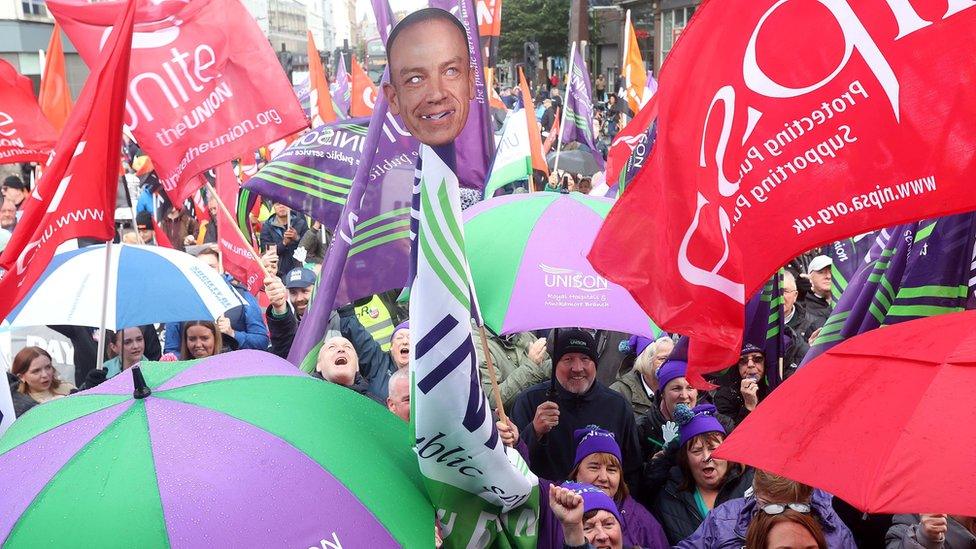
Tens of thousands of workers from across the public sector are walking out over pay on Thursday
A one-day public sector strike over pay on Thursday will be the biggest industrial action in Northern Ireland for many years.
So what is happening with public sector pay to cause unions representing 150,000 public sector workers to call a mass strike?
Pay has fallen sharply for public sector workers in Northern Ireland over the past two years due to a combination of high inflation, a Stormont budget crisis and the lack of devolved government.
"Real terms pay" refers to the value of a worker's pay adjusted for the impact of rising prices.
For example, someone's pay could increase from £28,000 to £30,000, giving them an increase in cash pay of just over 7%.
But if inflation is at running 9% that means the real value of their pay has fallen by 2%.
Official data, collected in the Annual Survey of Hours and Earnings, suggests that the typical public sector worker in Northern Ireland saw the real value of their pay fall by more than 4% between April 2021 and April 2022 and then by a further 7% between April 2022 and April 2023.
How has pay fallen for teachers, doctors and other workers in NI?
Civil servants who work directly for Stormont departments were given a pay rise of £552 for 2022, less than 2% in cash terms for most workers and far below the rate of inflation.
Those workers have been told that 2023 pay negotiations cannot start until the government provides clarity on Northern Ireland's budget.
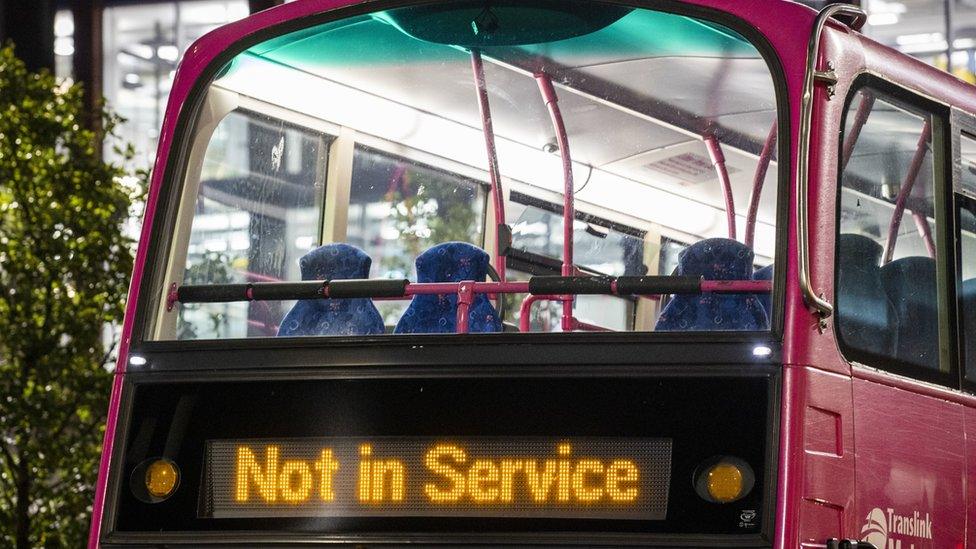
Members of trade unions Unite, GMB and Siptu in Translink held strikes during one of the busiest periods before Christmas
Teachers have not had a pay rise for almost three years as they have continued to dispute below-inflation offers.
A significant gap has opened up with teacher pay in other parts of the UK: newly qualified teachers in Great Britain earn about £30,000 compared to £24,000 in Northern Ireland.
Junior doctors have also seen their starting pay fall below the level paid in other parts of the UK.
Health workers who went on strike in September received a below-inflation pay award for 2022-23 and the Department of Health said budget uncertainty meant it was not in a position to make an offer for 2023-24.
Where does Stormont come into public sector pay?
If an executive was in place, ministers would take advice from the independent pay review bodies, assess what they could afford and set a public sector pay policy.
That process has been disrupted by the lack of an executive - the DUP has been boycotting power-sharing government since early 2022 over post-Brexit trade rules - but more importantly by an ongoing budget crisis.
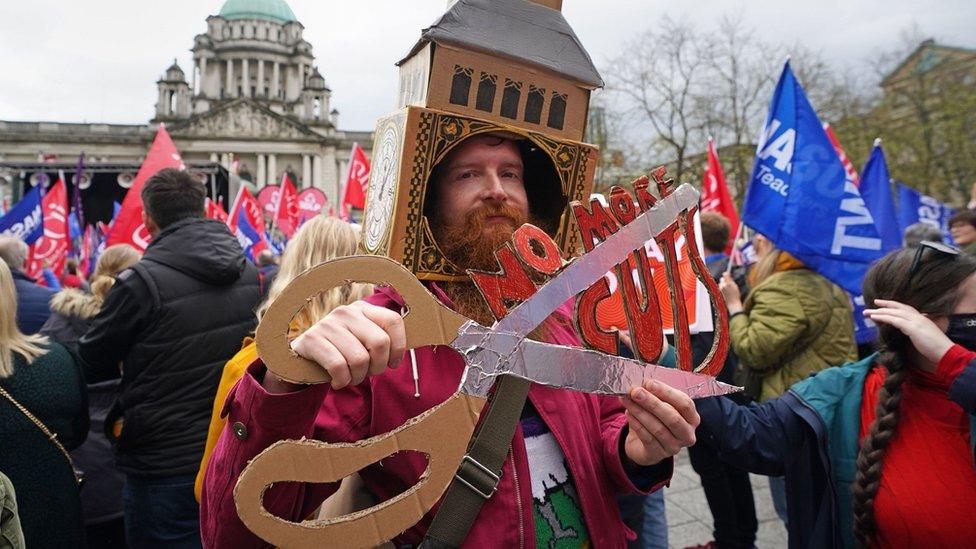
In November, the senior official in the Department of Finance warned that Stormont is on course for an overspend of £450m this financial year but that it would balloon to about £1bn if workers were given pay awards matching those in the rest of the UK.
As a result, the civil servants running Stormont in the absence of ministers have been telling staff that pay deals are not affordable under the current budget.
The government is offering to forgive the overspend and provide almost £600m for pay claims but only if the DUP returns to Stormont.

In December, DUP leader Sir Jeffrey Donaldson ruled out a Stormont deal, after a series of political talks
Trade unions say that is unfair and the money should be provided regardless of whether there is an executive.
Would Stormont's return settle all the pay issues?
The additional money provided by the government would mean pay negotiations could start but settlements would not be automatic.
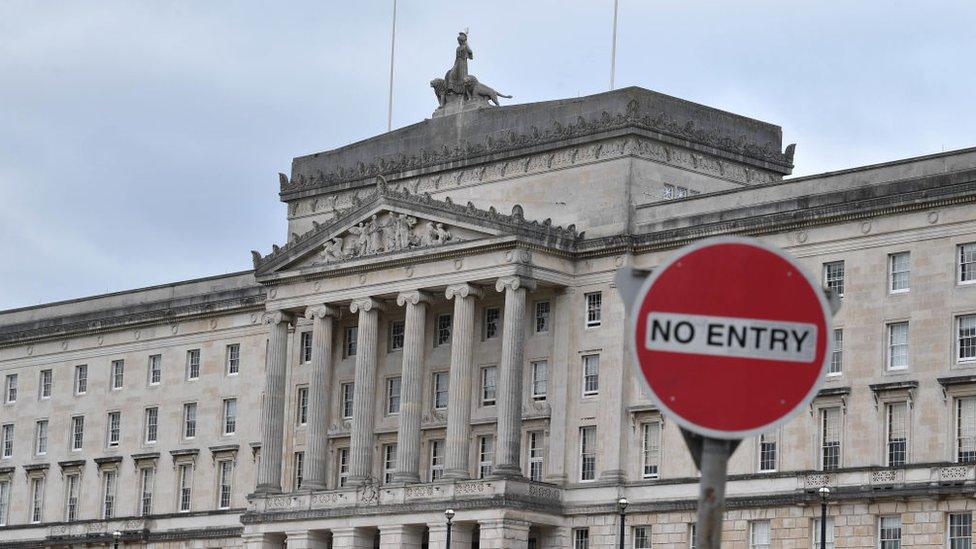
Stormont has been without a functioning executive or assembly since last February
The normal process of pay bargaining between unions and employers would have to take place, which could take several months.
What are some of the impacts of falling real pay?
Recruitment and retention of staff is a growing concern.
In a letter to Northern Ireland Secretary Chris Heaton-Harris late last year, the chief executives of Northern Ireland's health trusts warned that "staff retention is becoming an increasingly acute problem" across health and social care.
Thousands of health workers walked out over pay in September
Health service workforce statistics show vacancy rates have been on an upward trend since 2020, particularly in social care and nursing support. Staff turnover has also increased sharply.
It also means that pay is increasingly uncompetitive for specialist technical roles in other areas of the public sector.
For example, last year a job advert for experienced software developers in public sector roles raised eyebrows among IT workers with some suggesting that the salaries on offer were nowhere close to the going rate.
How does pay compare to the private sector?
Even with falling real pay, typical public sector wages are still higher.
The official figures suggest that in 2023 average weekly earnings in the public sector were £733 which was 22% higher than the private sector average of £599.
However, that is the smallest difference on record - the average gap over the last two decades has been about 37%.
A major reason for comparatively higher pay in the public sector is what economists call "a composition effect".

Wages for working in retail are among the lowest in Northern Ireland
Many of the lowest-paid occupations, such as hospitality and retail, exist almost exclusively in the private sector.
In the public sector there is a larger proportion of graduate-level and professional occupations, such as medicine and teaching.

More on strikes in Northern Ireland
- Published14 January 2024

- Published5 January 2024

- Published12 January 2024

- Published11 January 2024

- Published19 December 2023
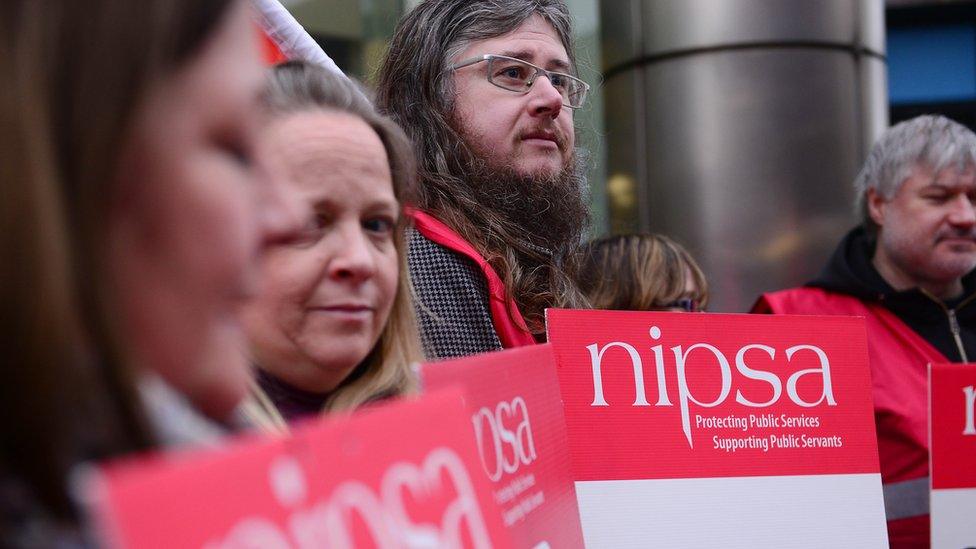
- Published11 January 2024
